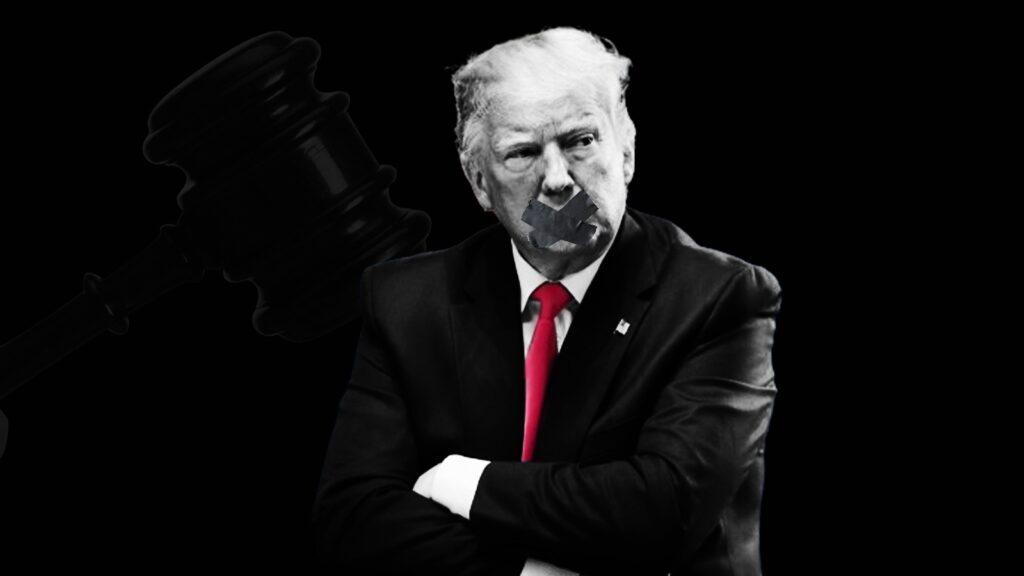The order referenced recent attacks by Trump against the judge’s daughter and dismissed Trump’s argument that he should be allowed to criticize perceived conflicts of interest and other grievances because they constitute “core political speech.”
Merchan stated, “This pattern of attacking family members of presiding jurists and attorneys assigned to his cases serves no legitimate purpose.” He emphasized that such attacks only instill fear in those involved in the proceedings, suggesting that they and their family members are fair targets.
The original gag order prohibited Trump from making or directing others to make statements about trial witnesses regarding their roles in the investigation and trial, prosecutors other than Manhattan District Attorney Alvin Bragg, and members of the court staff or Bragg’s staff.
Additionally, the order barred Trump from attacking the family members of any counsel or staff member if his comments were intended to interfere with their work in the case or made with the knowledge that the comments were likely to interfere with that work.
However, the order did not specifically prevent Trump from making statements about the judge’s family, creating a loophole that became evident when Trump began targeting the judge’s daughter, Lauren Merchan. He suggested in a series of posts that her work in politics implied the judge had a conflict of interest.
The controversy surrounding the judge’s daughter reached its peak last Wednesday when Trump accused her of using a photo of him behind bars as her profile picture on her X account. Trump claimed that this photo made it impossible for him to receive a fair trial.
However, it was later revealed that the account in question was likely fake. The handle for the X account had previously belonged to Lauren Merchan, but she had deleted the account. A spokesperson for the court stated that someone else, whose identity remains unclear, had taken over the handle and used the photo.
Despite this formal denial, Trump and his supporters persisted in their claims. They maintained that the account was still linked to the judge’s daughter, fueling allegations that the entire family held bias against the former president.
The focus on the judge’s daughter seems to stem partly from her professional background. She has served as an executive at Authentic, a digital marketing agency known for its work with Democratic political candidates. Trump had previously attempted, unsuccessfully, to have the judge removed from the case due to his daughter’s employment.
In response, prosecutors on Friday petitioned the judge to clarify whether the gag order was intended to shield his and the district attorney’s relatives from Trump’s attacks. They also proposed the possibility of holding Trump in contempt, arguing that the original gag order already addressed family members.
Merchan granted the prosecutors’ request for clarification but opted not to hold Trump in contempt.
“The court’s order of March 26, 2024, did not encompass the family members of this court or of the district attorney,” the order stated. “Therefore, it is unnecessary for this court to ascertain whether the statements were intended to materially interfere with these proceedings.”
Separately, Trump met a Monday night deadline to post a $175 million bond to appeal the verdict of the New York civil fraud case. In that case, a judge found him liable for conspiring to inflate his net worth for financial gain, including obtaining more favorable loan terms from banks.
New York Supreme Court Justice Arthur Engoron imposed a $454 million judgment against Trump in the fraud case. Last month, Trump’s lawyers successfully argued for a reduction in the bond, averting a potential financial crisis for the former president, who faced challenges in raising the required funds.
The reduction in the bond provided Trump with a lifeline. If a panel of five judges on the appeals court had rejected his request, Trump risked losing control of his bank accounts and some of his prestigious properties. By posting the $175 million bond, Trump prevented the New York attorney general from seizing assets while he pursued his appeal.



